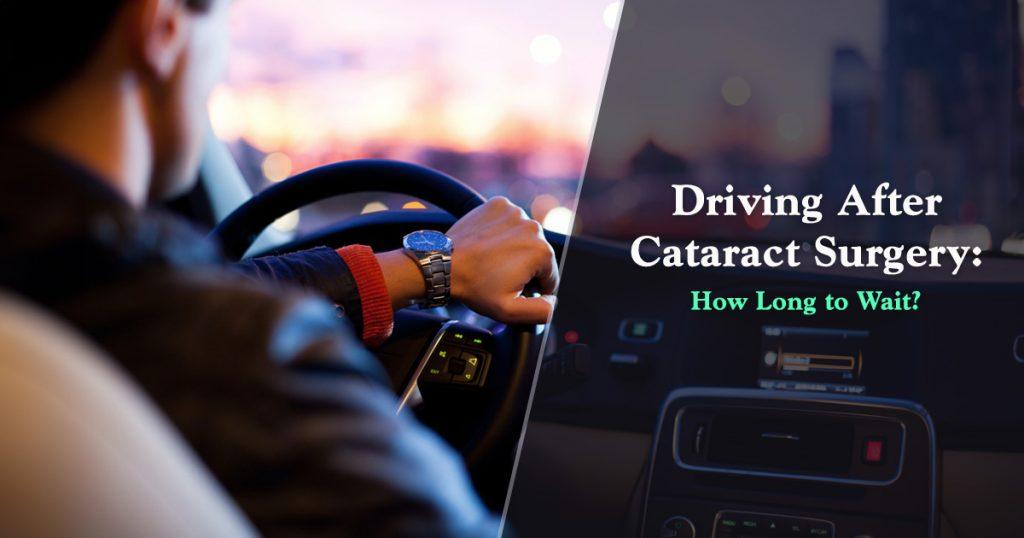Cataract surgery is a popular treatment that replaces the clouded lens of the eye with an artificial one, helping to restore clear vision. If you’re planning to undergo cataract surgery, one of the primary concerns you might have is about driving post-surgery. Many patients wonder how long after cataract surgery they can drive, and there are driving restrictions and recommendations after cataract surgery that are essential for a safe recovery.
Understanding Cataract Surgery
You must first understand what cataract surgery entails to know when you can drive after it. As mentioned above, the normal lens of the eye is removed and replaced with an artificial intraocular lens (IOL) in this routine outpatient operation. This procedure is typically recommended when cataracts begin to significantly impair vision, making daily activities like driving difficult or dangerous.
The actual procedure is usually completed in less than an hour. To guarantee a satisfactory conclusion, it is crucial to closely adhere to your doctor’s instructions, even if the recovery process can differ from person to person.
Driving Restrictions After Cataract Surgery
In most cases, you can resume driving within a few days if your eye doctor approves. However, you will need someone to drive you home right after the surgery and to your follow-up appointment the next day because anesthesia is used during the procedure. If your doctor feels your vision isn’t stable enough at the follow-up appointment, they may recommend waiting a few more days before you drive.
However, the specific timeline for when you can drive after cataract surgery can vary based on several factors:
- Type of Surgery: The type of cataract surgery you had can impact your recovery time and driving restrictions. Traditional cataract surgery, which involves a larger incision, may require a longer recovery period before driving compared to advanced techniques like laser-assisted or small-incision cataract surgery.
- Healing Progress: The healing process after cataract surgery is gradual, and your eye may take several days or even weeks to fully recover. During follow-up sessions, your doctor will keep an eye on your recovery and advise you when it’s safe to drive, given your unique healing schedule.
- Vision Clarity: One of the most important factors in determining when you can drive after cataract surgery is the clarity of your vision. Even if you feel physically well, if your vision is still blurry or distorted, it may not be safe to drive.
- Eye Drops and Medications: After cataract surgery, you’ll likely be prescribed eye drops and medications to help with healing and prevent complications. Some of these medications may have adverse effects that briefly impair your ability to drive safely, such as light sensitivity or blurred vision.
Is it advisable to drive the day after cataract surgery?
The answer depends on your healing progress and your eye doctor’s guidance. Generally, if your vision has stabilized and you’re no longer experiencing significant discomfort or side effects from the surgery or medications, you might be able to drive about one week after cataract surgery.
While driving the day after cataract surgery is typically not advised, there may be certain exceptions. If you had a minimally invasive procedure, experienced no complications, and your vision has improved significantly, your doctor might allow you to drive the day after surgery.
However, it’s crucial to discuss your specific situation with your doctor before driving. They will evaluate your vision, depth perception, and overall eye health to determine if it’s safe for you to drive at that point in your recovery.
Driving Safely After Cataract Surgery
Once your doctor has cleared you to drive after cataract surgery, keep these important tips in mind to ensure your safety and the safety of others on the road:
- Take Breaks: Even if your vision has improved, your eyes may still feel tired or strained after extended periods of driving. Plan to take frequent breaks during longer trips to give your eyes a rest.
- Wear Sunglasses: During the recovery process, your eyes may become more sensitive to glare and bright light. Wear sunglasses when driving to reduce discomfort and improve visibility.
- Adjust Your Mirrors: Your depth perception and peripheral vision may be slightly different after cataract surgery. Take the time to adjust your side and rearview mirrors to account for any changes in your sight field.
- Avoid Nighttime Driving: Driving at night can be more challenging after cataract surgery, especially if you’re experiencing any residual glare or halos around lights. Limit your driving to daytime hours until your vision has stabilized.
- Be Patient: Remember that your eyes are still healing, and it may take some time to adjust to your new vision. Be patient with yourself, and don’t rush into situations that could jeopardize your or others’ safety.
How long after cataract surgery can you drive?
Many patients can drive within a week, but it’s important to follow your doctor’s advice. Ensure your vision is clear and stable before driving. Avoid driving for at least 24 hours following surgery, and make all follow-up appointments. By taking these steps, you can safely resume your normal activities, including driving.
Be patient and cautious during your recovery. Follow your doctor’s guidance, protect your eyes, and let your vision stabilize before driving. This allows you to have clear eyesight while also ensuring your own and other drivers’ safety on the road.
